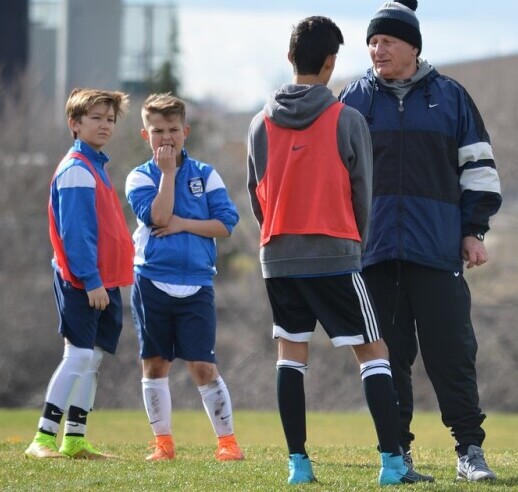
Understanding the psychology and motivation of players isn’t just a fancy theory—it’s key to unlocking their potential. Each player comes with their unique vibe, personal goals, and reasons for being in the game. Tuning into these aspects helps you push the right buttons to motivate them and build a connection with the team.
Building stamina, both physically and mentally, forms the backbone of any successful soccer player. Coaches need to engineer training sessions that don’t just push players to their physical limit but also challenge their mental toughness. Focusing on varied exercises, and incorporating mental drills, gets players ready for those nail-biting moments on the pitch.
Key skills like dribbling, passing, and shooting don’t just magically appear—they require practice and strategic nurturing. Coaches should emphasize these basics, ensuring young talents develop a solid skill set. Tailoring drills to focus on these essentials ensures players are equipped for any scenario.
Communication in soccer isn’t just about barking orders or calling plays. It’s about creating an open dialogue with players, understanding their perspectives, and using feedback to improve strategies. Effective communication builds trust and ensures the whole team is on the same page.
Small-sided games are the secret weapons in a coach’s arsenal for building a strong skill base. They let players experience real-game pressure on a smaller scale, leading to better ball control and tactical understanding. By incorporating these into regular training, coaches can observe and enhance individual player performance seamlessly.
In-Game Strategies: Reading the Field and Making Impactful Decisions
Formations aren’t just about where players stand; they’re about creating strategic opportunities to exploit the opponent’s weaknesses. Understanding the various types of formations allows a coach to select the best setup for the team’s strengths and the opposition’s vulnerabilities.
Reading the opponent’s tactics starts before the whistle blows and continues through the game. Observing their formation, the key players, and their movement patterns can help you anticipate their next move and adjust your strategy accordingly.
Adjusting strategies in real-time can change the game. Whether it’s responding to an unexpected lineup or shifting tactics in the middle of play, being flexible and making quick decisions can give your team the upper hand.
Substitutions aren’t just about giving players a rest; they’re strategic moves to maintain or increase your team’s momentum. Timing these changes wisely can refresh the team, counteract opponent strategies, and create new scoring opportunities.
It’s vital to keep a balance between defense and offense. Diving too deep into either can leave the team vulnerable. A tactical approach involves making sure the lines between defense and attack are fluid and adaptable to the game dynamics.
Developing Technical Skills: Enhancing Player Performance
Techniques for improving ball handling and control take center stage in player development. Focusing on drills that boost agility and coordination helps players dribble with finesse and confidence. By regularly incorporating these exercises, players can improve their touch and take control in tight situations.
Drills to improve shooting accuracy and power are essential in building player confidence and capability in front of the goal. Practicing different shooting techniques and angles allows players to develop the skills necessary to surprise the goalkeeper and convert opportunities into points.
Spatial awareness on the field is more important than you might think. Players need to be acutely aware of their position in relation to the ball, teammates, and opponents. Encouraging exercises that enhance this awareness can lead to smarter decision-making and better play execution.
Teamwork and communication aren’t just nice to have; they’re crucial for a successful game. It’s important to encourage players to talk to each other, support one another, and work as a cohesive unit. This collaboration ensures everyone’s efforts are synchronized towards team goals.
Training routines should be adaptable because every player is unique. Customizing exercises and fitness plans to fit individual strengths and weaknesses ensures players reach their full potential while keeping their enthusiasm for the game high.
Beyond the Field: Building a Winning Team Culture
Team culture isn’t just built on the field; it extends to activities outside the game. Organizing team-building activities helps form bonds and boosts morale. When players connect off-field, they’re more likely to gel and support each other during the heat of competition.
Creating an inclusive and supportive environment goes beyond just welcoming all players. It’s about making sure each individual feels valued and heard. Encouraging diversity and inclusion fosters a sense of belonging, making the team dynamic more robust.
Sportsmanship might seem old-school, but it’s at the heart of any good team. Encouraging players to show respect to opponents and officials nurtures a positive atmosphere where everyone thrives. Fair play isn’t just about following rules; it’s about elevating the spirit of the game.
Setting realistic goals gives players something tangible to aim for and track progress. Breaking down larger objectives into achievable milestones keeps motivation high and provides a clear path toward improvement. Evaluating progress regularly ensures everyone stays on track.
Celebrating achievements, no matter how small, boosts confidence and creates a positive team environment. Learning from losses is just as important, helping the team grow and evolve. These moments offer valuable lessons and build resilience, turning setbacks into stepping stones for future success.
